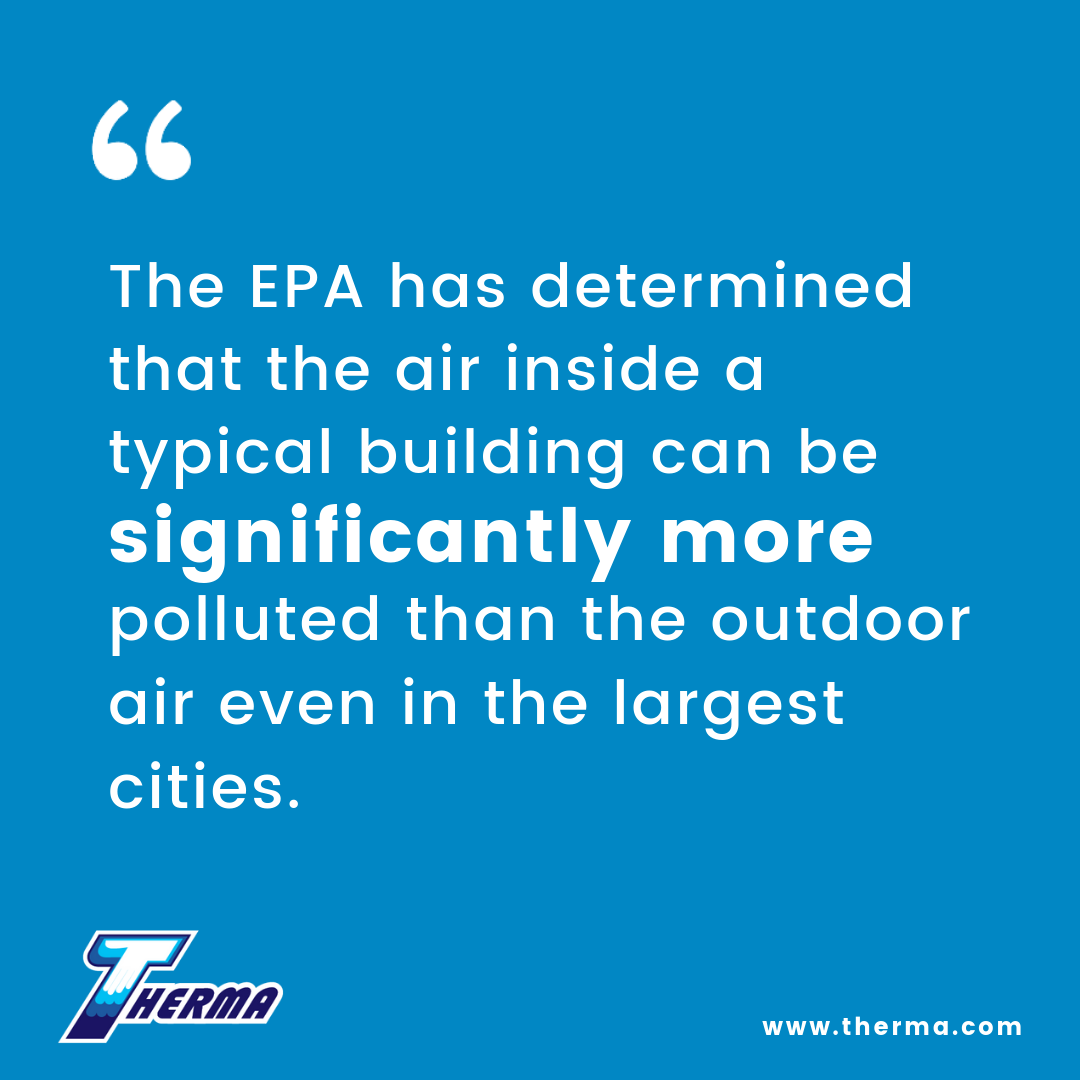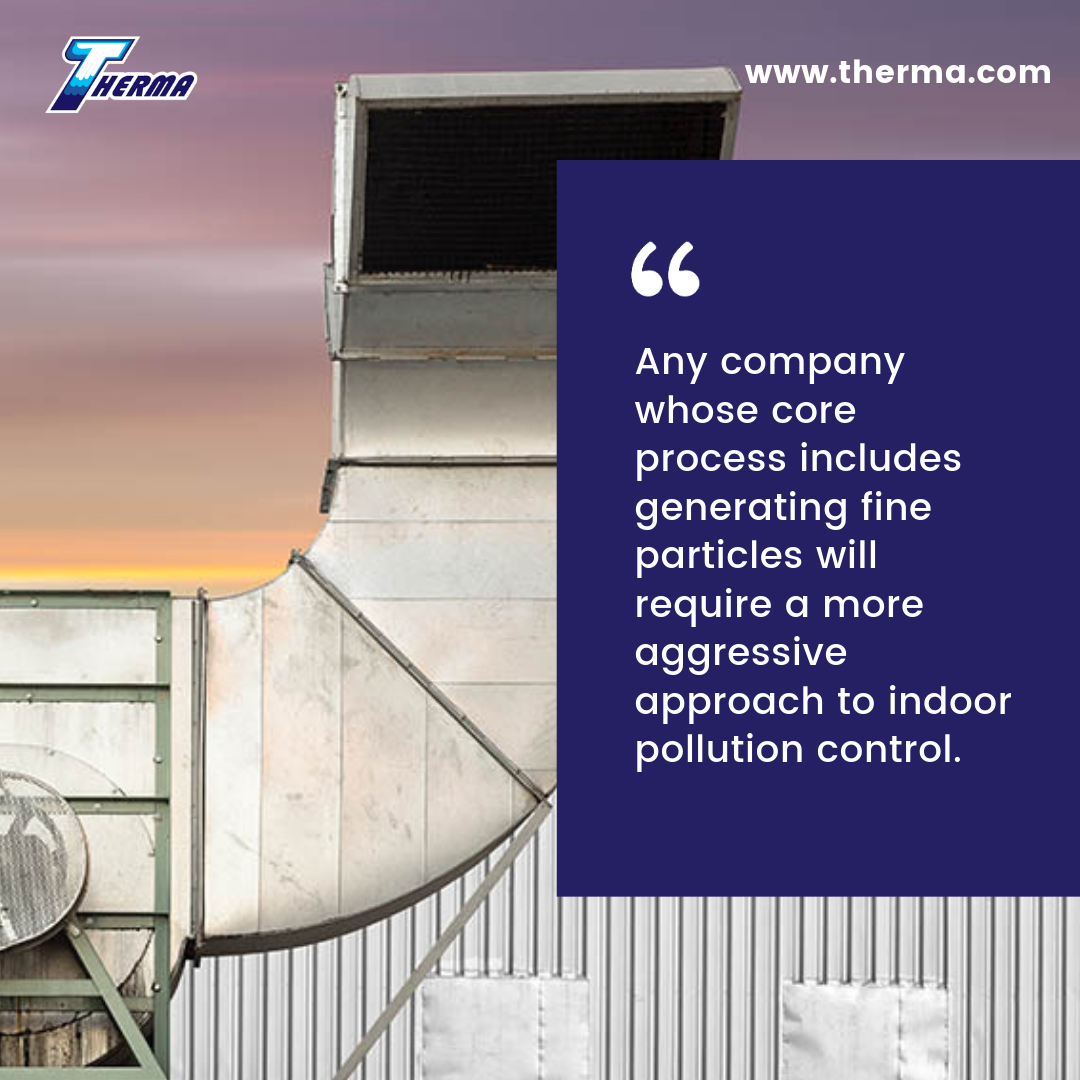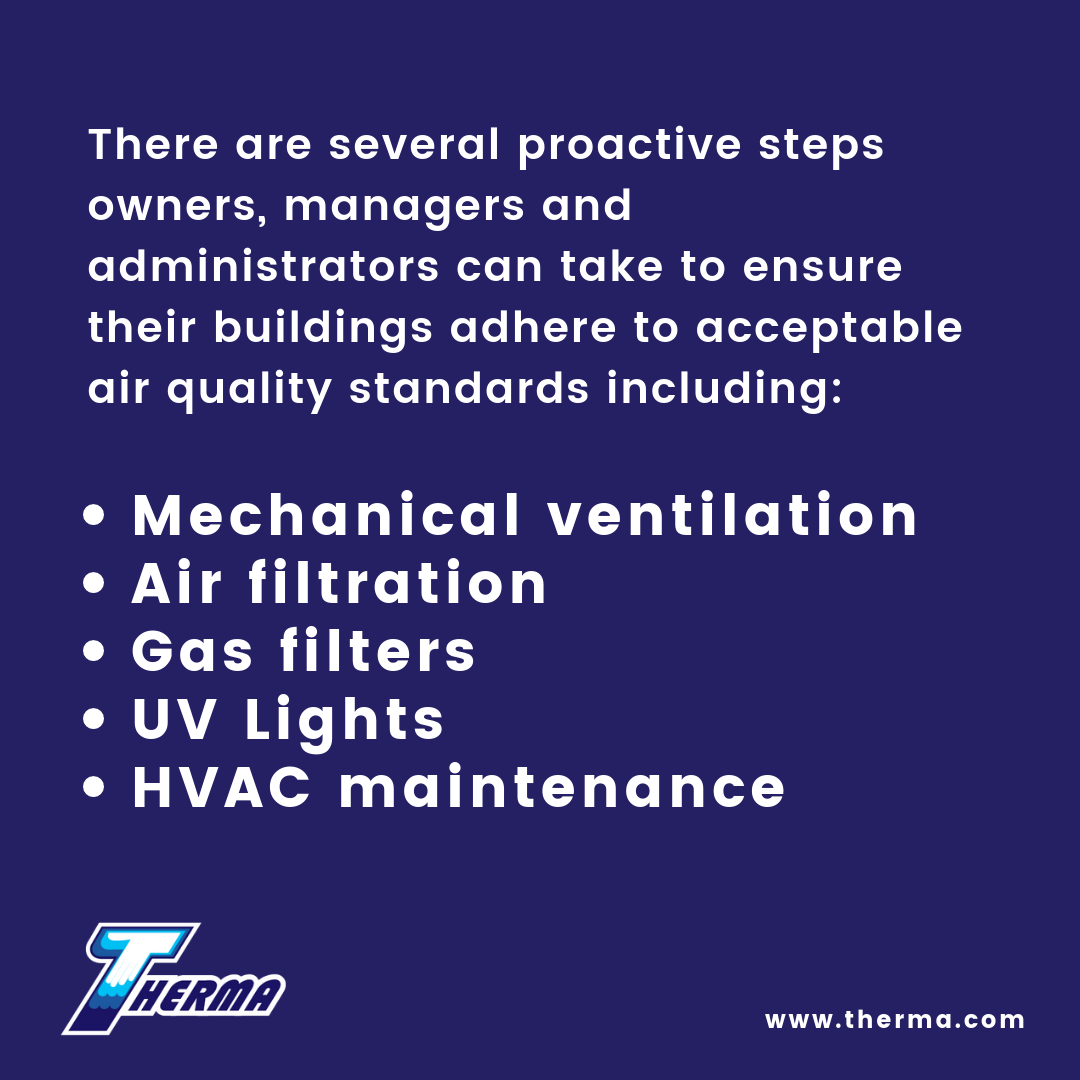Average Americans spend a third of their lives in the workplace, so it’s important to ensure commercial buildings are healthy and safe for workers, customers, visitors and business partners. [1] In fact, the EPA has determined that the air inside a typical building can be significantly more polluted than the outdoor air even in the largest cities.[2] In light of the time spent indoors and the potential exposure to airborne contaminants, it makes sense to focus on maintaining the healthiest indoor environment possible.

Common Pollutants and Their Sources
Building science has focused on creating tight envelopes for energy conservation and fossil fuel preservation. Unfortunately, the majority of indoor air quality issues stem from a lack of natural ventilation that allows contaminants to accumulate in the occupied area.
Here are some of the most common pollutants found in commercial buildings:
- Chemicals and Gasses: Sources for chemical pollutants include cleaning agents, caulks, sealants, adhesives, volatile organic compounds (VOCs), paints, vinyl flooring, fuel, combustibles and personal products. [3]
- Biological Organisms: Since they’re built for habitation, commercial buildings provide a rich source of nutrients and moisture that promote the growth of mold, fungi, dust mites pollen and dander. If left unaddressed, biological organisms thrive inside HVAC systems where moisture is abundant in chillers and evaporator coils.
- Particulate Matter: Many solid and liquid molecules are light enough to remain suspended in the air where they can be easily inhaled. These ultra-fine particles come from dust, fibers, paper and other indoor activities.
- Increased CO2: Tight buildings without adequate ventilation can create a buildup of CO2 that exceeds ASHRAE 62.1 standards.[4]
Obviously, pollutant levels depend on the nature of the business, building construction and occupancy rates. For example, a furniture manufacturing plant is likely to have more gaseous pollutants than a bank building. Any company whose core process includes generating fine particles will require a more aggressive approach to indoor pollution control.

Consequences of Poor IAQ in Commercial Buildings
The connection between substandard indoor air quality in commercial buildings and higher rates of respiratory illness is well-established.[5] Some of the more common health effects of poor IAQ include:
- Sneezing
- Wheezing
- Congestion issues
- CO2-related fatigue
- Rashes
- Eye irritation
- Asthma
- Respiratory disease
- Heart disease
- Cancer[6]
Controlling Pollutants: Indoor Airborne Contaminants at the Source
When it comes to controlling pollutants in your commercial building, indoor air is one of the first challenges you’re going to have. Buildings occupants will rarely notice clean air, but most people immediately sense when the air is polluted. While it’s tempting to put off non-essential repairs, it’s important to remember these systemic deficiencies often contribute to the proliferation of airborne contaminants. There are several proactive steps owners, managers and administrators can take to ensure their buildings adhere to acceptable air quality standards.

- Mechanical ventilation: Many IAQ issues can be resolved with ventilation solutions that provide sufficient air exchange conforming to AHRAE 62.1 and ASHRAE 55 standards. Opening doors and windows helps, but mechanical ventilators can be calibrated to precisely control fresh air exchange without compromising energy efficiency. These powered devices draw outdoor air into the living area while simultaneously exhausting stale indoor air. Some models include an energy recovery feature and a desiccant wheel to save energy and lower indoor humidity levels.
- Air filtration: Mechanical filters serve as the cornerstone of a comprehensive IAQ strategy. Filters are available in a variety of styles and configurations including media, electrostatic and electronic models. HEPA filters can be installed in areas with ultra-fine particle contamination. These hospital-grade filters remove 99.9 percent of particulate matter down to .3 microns.[7]
- Gas filters: Gas filters are specially designed to remove vaporous pollutants using an absorptive media such as activated carbon. While expensive to install and maintain, gas filters can remove contaminants as small as .003 microns.
- UV lights: UV is the only available technology that actually kills living organisms. When tuned to a wavelength between 200-280 nanometers, UV sterilizes organisms so they can no longer reproduce.
- HVAC maintenance: Preventive HVAC maintenance optimizes equipment performance so the system cycles less often and produces fewer contaminants. On a regular basis during off-peak hours, NATE certified technicians will analyze, test and calibrate the equipment to ensure it’s operating at maximum efficiency. They’ll inspect the air distribution system to locate and repair gaps, breeches and loose connections in the ductwork that can cause negative pressure air leakage.
Everyone Deserves a Healthy Work Environment
Understanding building science dynamics is the first step to creating a safe and healthy indoor environment. A building with clean air will benefit everyone who occupies it and result in higher employee productivity and happier customers. Mold growth, excessive humidity, employee illness and damaged equipment are all signs of a significant IAQ problem. If you suspect the air inside your building is contaminated, Therma has extensive experience in designing, installing and maintaining comprehensive commercial indoor air quality systems.
By William Busse
William Busse has more than 30 years experience in the construction industry in sales, contracting, distribution and manufacturing. He has an extensive background in the mechanical contracting industry, largely from the distribution and manufacturing sides of the business. He has had deep involvement with a variety of large-scale commercial/industrial mechanical contractors, particularly related to value engineering. This includes process piping, high-pressure steam, cryogenics, thermal insulation and commercial/industrial HVAC.
Sources:
- http://www.gettysburg.edu/news_events/press_release_detail.dot?id=79db7b34-630c-4f49-ad32-4ab9ea48e72b
- https://www.epa.gov/indoor-air-quality-iaq/inside-story-guide-indoor-air-quality
- https://www.cdc.gov/niosh/topics/indoorenv/chemicalsodors.html
- https://ohsonline.com/articles/2016/04/01/carbon-dioxide-detection-and-indoor-air-quality-control.aspx
- https://tinyurl.com/y9sjon4g
- https://www.epa.gov/indoor-air-quality-iaq/introduction-indoor-air-quality
- https://www.engineersedge.com/filtration/hepa_filter.htm







